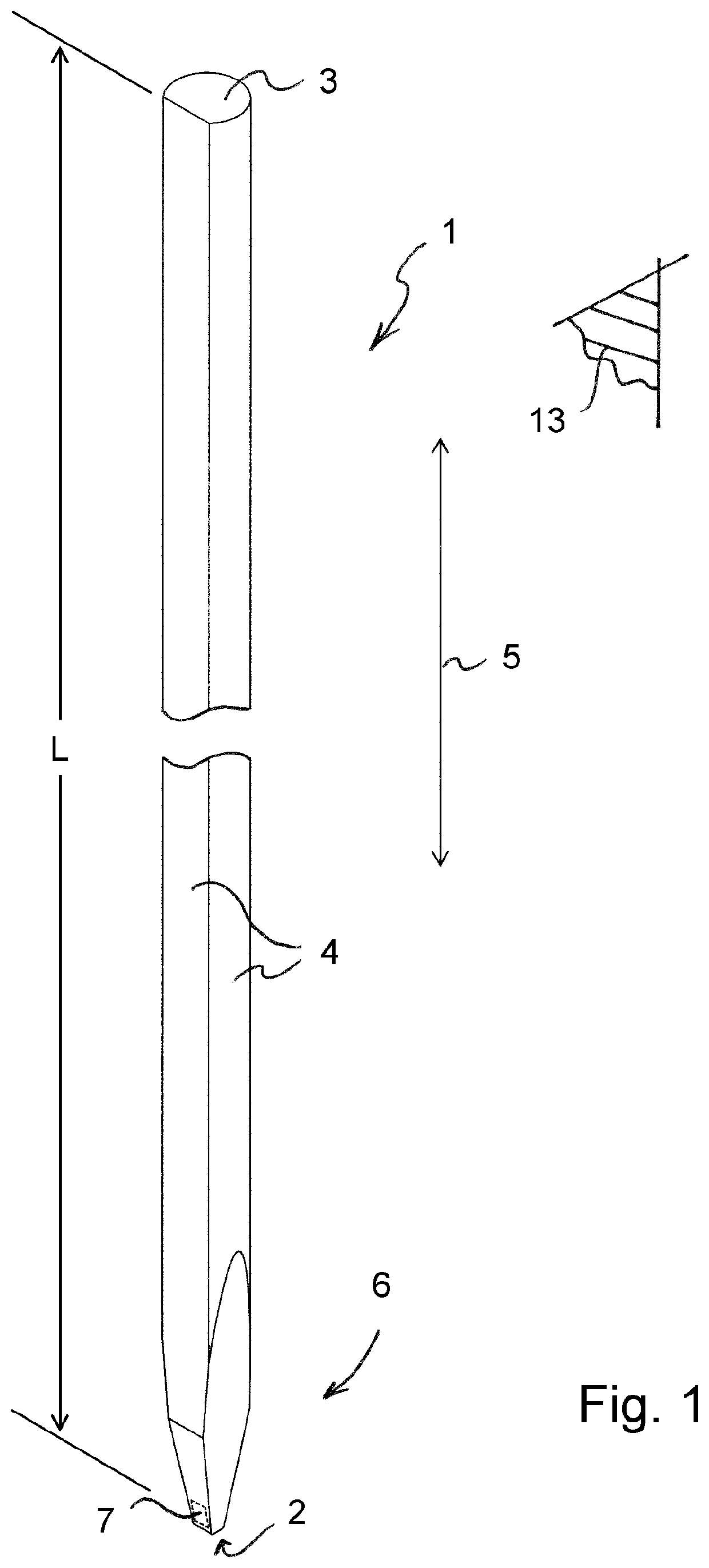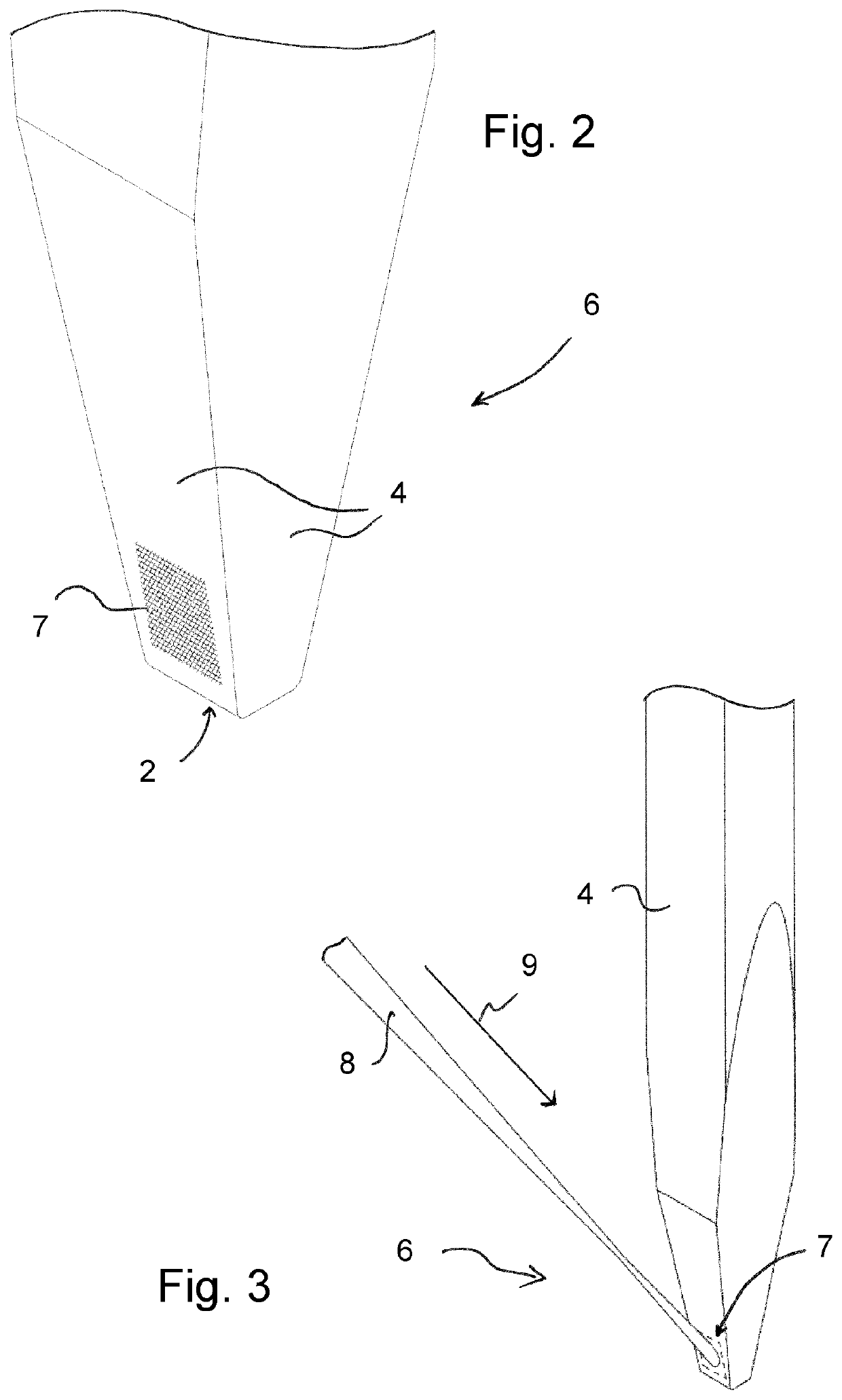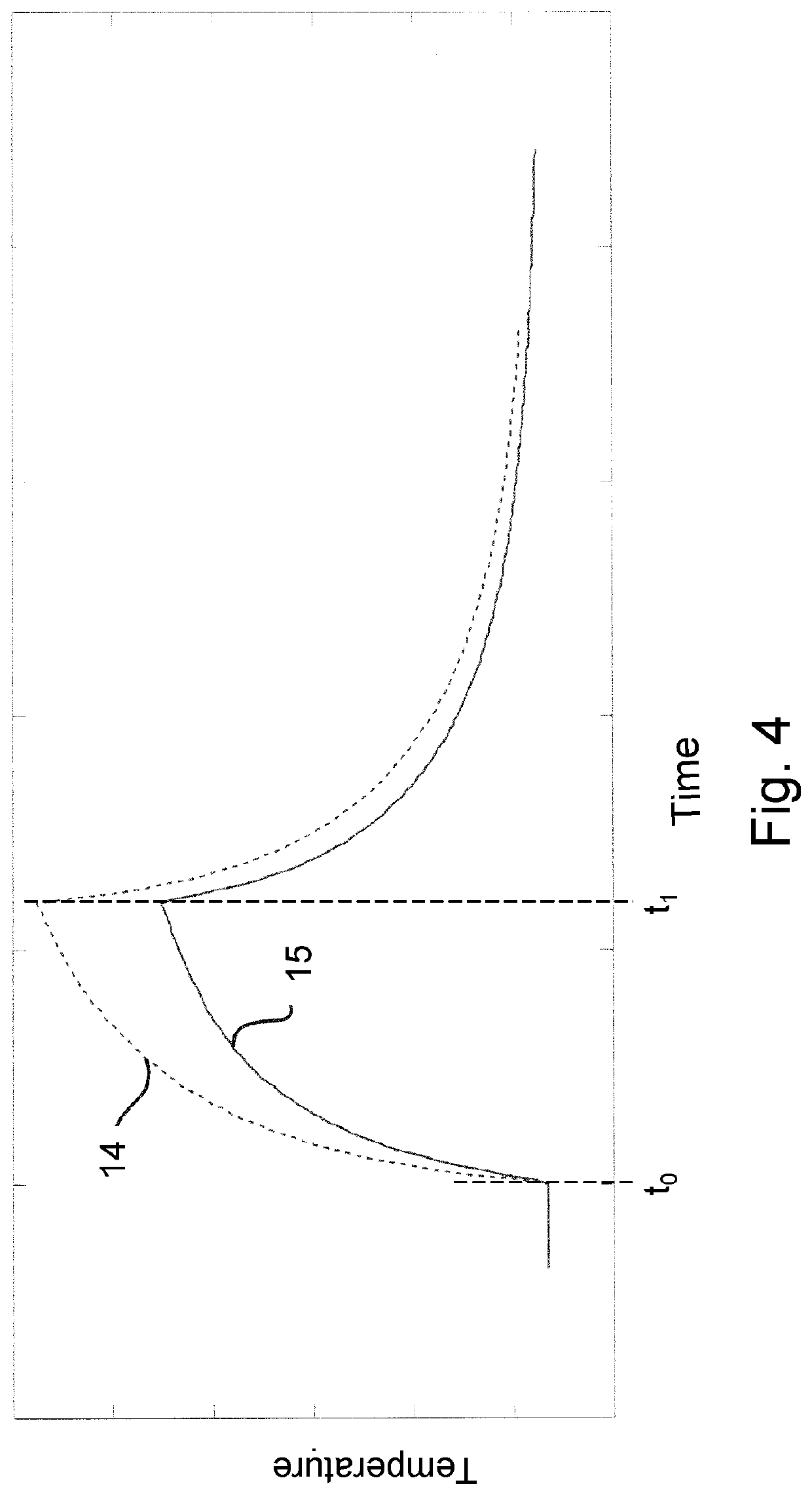Ultrasonic tool and ultrasonic connection device herein
a technology of ultrasonic connection and ultrasonic tool, which is applied in the direction of mechanical vibration separation, conductors, non-electric welding apparatuses, etc., can solve the problems of contamination of the connecting component or its environment, difficulty in coupling the laser beam into the longitudinal recess, etc., to improve the degree of absorption, improve the suitability of the ultrasonic tool for laser-supported ultrasonic bonding or laser-supported ultrasonic welding, and prevent the effect of persons
- Summary
- Abstract
- Description
- Claims
- Application Information
AI Technical Summary
Benefits of technology
Problems solved by technology
Method used
Image
Examples
Embodiment Construction
[0049]The ultrasonic tool 1 according to FIG. 1 provides a first end face 2 formed as a connecting contact surface, a second end face 3, which is opposite the first end face 2, and a tool cover surface 4 connecting the end faces 2, 3. The ultrasonic tool 1 is elongated in a longitudinal direction of the tool 5. It has a length L from the first end face 2 to the second end face 3, which is greater than 50 mm. With respect to the longitudinal direction of the tool 5, the lower 15 mm of the ultrasonic tool 1 comprising the connecting contact surface 2 form an end region 6 of the ultrasonic tool 1. In the end region 6, the ultrasonic tool 1 tapers in a wedge-shaped manner in respect of a cross-section oriented vertically to the longitudinal direction of the tool 5 in the direction of the connecting contact surface 2. The ultrasonic tool 1 is symmetrically designed in relation to a longitudinal center plane of the tool 13 which receives the longitudinal direction of the tool 5.
[0050]The ...
PUM
 Login to View More
Login to View More Abstract
Description
Claims
Application Information
 Login to View More
Login to View More - R&D
- Intellectual Property
- Life Sciences
- Materials
- Tech Scout
- Unparalleled Data Quality
- Higher Quality Content
- 60% Fewer Hallucinations
Browse by: Latest US Patents, China's latest patents, Technical Efficacy Thesaurus, Application Domain, Technology Topic, Popular Technical Reports.
© 2025 PatSnap. All rights reserved.Legal|Privacy policy|Modern Slavery Act Transparency Statement|Sitemap|About US| Contact US: help@patsnap.com



